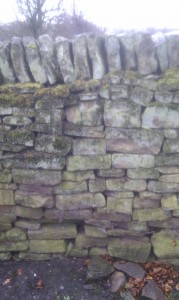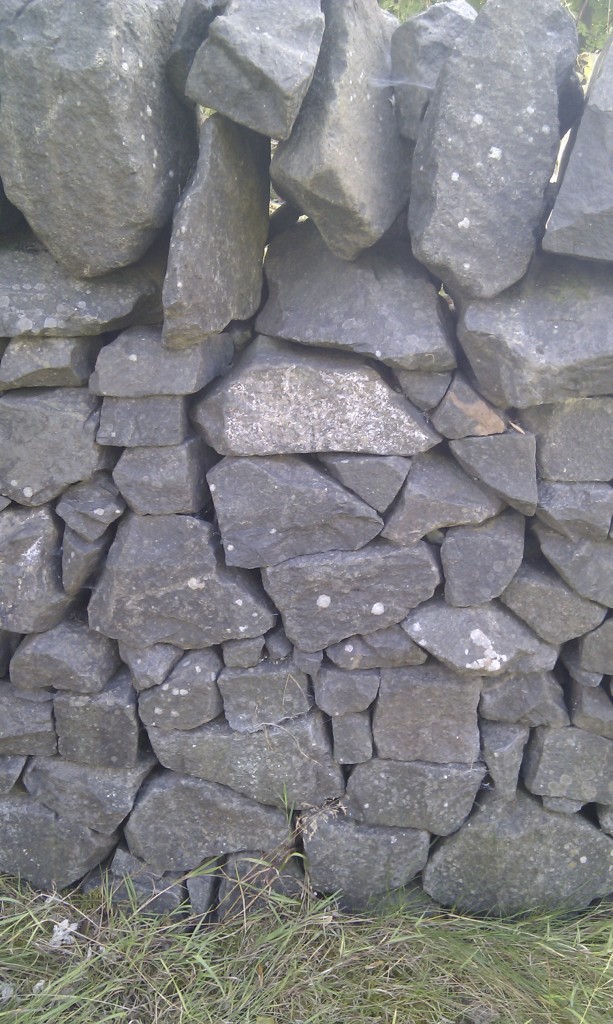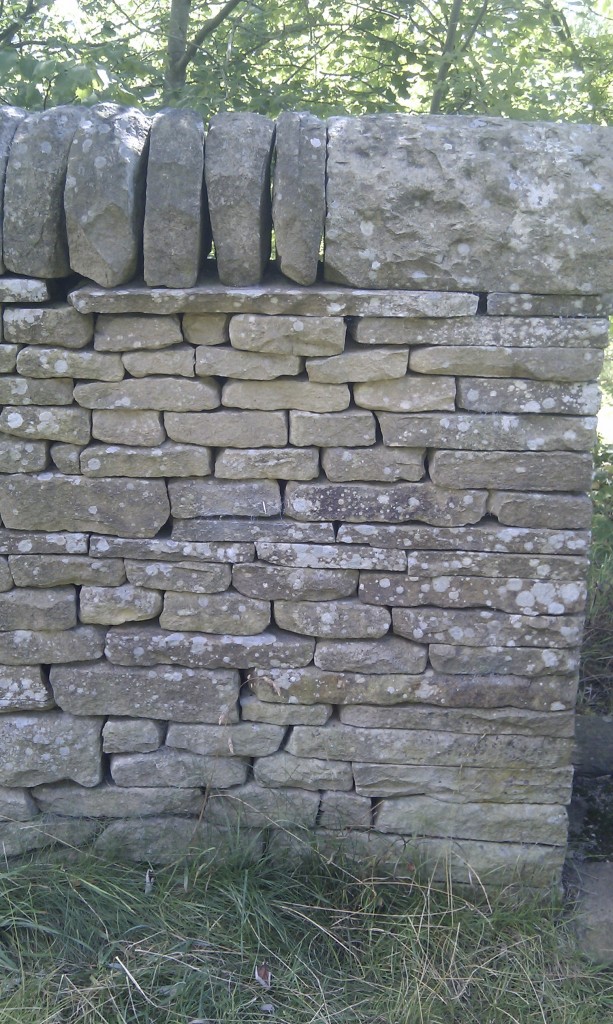 I grew up surrounded by stone walls, something which certainly nurtured the geologist in me. I certainly didn’t view them in any negative Pink Floyd kind of way. These were outdoors walls, field boundaries tracing across the hills for miles. They were easily scaled, fun to walk on top of and a place to store contraband, should the need arise.
I grew up surrounded by stone walls, something which certainly nurtured the geologist in me. I certainly didn’t view them in any negative Pink Floyd kind of way. These were outdoors walls, field boundaries tracing across the hills for miles. They were easily scaled, fun to walk on top of and a place to store contraband, should the need arise.
The walls of my youth were top-class, I now realise. My English mill-town home was surrounded by Carboniferous sandstone that produces beautiful regular rectangular slabs. Turning such regular stones into a beautiful stone wall is easy. A dry-stone wall mind, building a wall like this with cement would be like putting Coke into a gin and tonic: both barbaric and unnecessary.
Dry-stone walls are common on British uplands, but are found in many other countries. They are an attempt to solve two problems: a field full of stones and the roving instinct of livestock. I’ve seen Irish fields incredibly finely divided by walls, also with a pile of stones in the middle. Here the need to get stones off the ground is paramount. Some walls in Ireland are known as ‘famine walls’, they were built by starving men during the Great Hunger of the 1840s. These men were fed by the state, but the ideology of the time meant they had to work for earn the food. Sometimes stone walls dividing nothing from nothing were the result.
To a geologist, a stone wall can present a temptation. By their very nature, they are often built from stones picked off the ground, possibly moved from a distance away. And yet, they often seem to reflect changes in the geology quite precisely. Driving into the town of Buxton, for example, the bedrock change from sandstone to limestone is marked with a short (>3m) change in the rock-type of the stone walls. A geologist should ignore such evidence when mapping and look only at outcrops, but it can be very tempting, believe me….
Stone walls are a reflection of the underlying geology. This is clearly demonstrated at the millennium wall, to be found at the National Stone Centre, in Derbyshire, England. This is a series of dry-stone walls, representative of types from across Britain.
First, here’s a handsome gritstone wall, similar to the ones I grew up with. Its made from Carboniferous sandstone as found over most of Northern England.
Note how the regular bedding makes for blocks that are brick-like and easy to lay. You can get a similar but rougher effect from slates, like this Ordovician slate from the English Lake District.
If you have only igneous rocks to hand, life is harder as there are no parallel surfaces to work with. Here with this Scottish dolerite, they’ve had to work hard to get a rough looking wall.
 If you’ve only got tough metamorphic rocks to work with, things are getting pretty desperate. This Scottish wall of meta-quartzite really is just a pile of stones.
If you’ve only got tough metamorphic rocks to work with, things are getting pretty desperate. This Scottish wall of meta-quartzite really is just a pile of stones.
Stone walls are not much made, these days. If a wall falls into disrepair, it is far easier for a landowner to put up a barbed-wire fence instead. A shame I think.




Fascinating! Here in East Anglia what you’ll find is knapped flint in a lime matrix because flint nodules don’t readily make walls – at least as we have no drystone walls I’m assuming that it doesn’t work. lot of clay here too means bricks were fairly early.
Indeed. Not a lot of stone walls where I know live (Berkshire). Lots of old hedges though, which I guess is the lowland / South England equivalent. I seem to remember a lot of earthen banks in Devon and Cornwall which is another variant on the same theme.
Pingback: Stuff we linked to on Twitter last week | Highly Allochthonous
Pingback: Geology and life in the English ‘Coal Measures’ | Metageologist